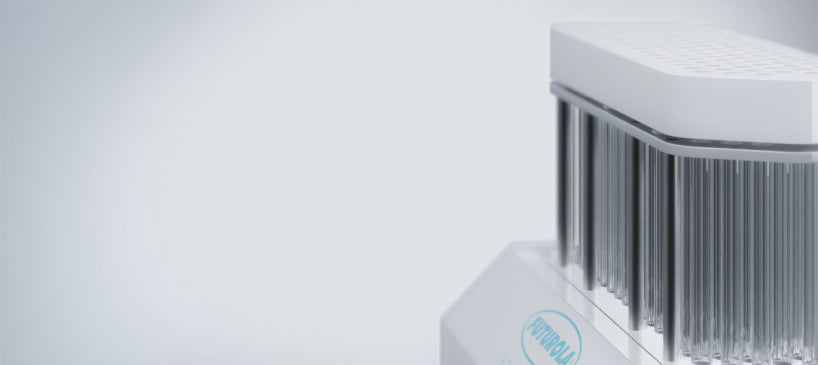A shock is the effect that occurs when the impact from an object is transferred to another object. As simple as it seems, a shock can cause severe damage to objects, especially fragile ones. Recognizing this possibility, you should invest in shock-absorbing packaging when transporting or storing high-value tech. These two periods are crucial because most damage to fragile products happens at these phases of the supply chain.
Shock-absorption packaging protects products during these phases through a process called damping. It is when the impact from an object is disrupted and dispersed before it can collide with another. These protective materials provide damping for fragile items, ensuring that the strength of the shock does not affect them.
Common Uses of Shock-Absorbent Packaging
Shock absorption is essential when transporting most goods, as transport lines are often full of bumps and collisions. However, it is more critical in some areas than others. For instance, fragile products like electronics, medicines, and food items are more likely to become damaged during transportation and storage than construction materials. Therefore, this packaging is a staple in industries where fragility is a concern.
Consumer Electronics
Electronics are often fragile, requiring extra care in handling, especially during transportation and storage. High-value tech usually contains delicate components intolerant to moisture and temperature changes. Shock-absorbent packaging offers a moisture barrier and regulates the temperature to ensure fragile product safety.
Industrial Uses
High-value electronics are not the only ones protected in layers of polymer or metal. Shock-absorbing packaging has varied uses, especially in industrial settings. In these settings, it protects equipment from possible shock from activities around it. This use is widespread in industries where heavy machinery is used.
Other Sectors
Shock-absorbing packaging is used in many sectors that deal with fragile products. These include:
- Medicine/Pharmaceuticals
- Aerospace
- Agri-food
- HVAC
- Automobile
- Beverages
- Glassware
Importance of Shock-Absorbent Packaging for High-Value Tech
High-value tech products and their delicate components need shock absorbers to get to the final user in good quality. To this end, manufacturers invest in the best shock-absorbent packaging for them during transportation and storage. The goals include:
- Protecting the product from damage;
- Preventing quality deterioration; and
- Complying with safety regulations.
Common Materials for Shock-Absorbent Packaging
Shock-absorbent packaging for high-value tech is typically made of quality materials that guarantee the product’s protection throughout transportation and storage. The most used options are:
Concrete
Concrete is a sturdy option for shock absorption, literally. It is the strongest material being used and guarantees protection against crashes. Unfortunately, its non-flexibility means it cannot be reused after taking a big hit.
Metal
Another option that guarantees fragile product safety is metal. While it is slightly more flexible than concrete, the difference is not much. It also becomes useless after suffering a great hit as it cannot recover its shape anymore or serve its purpose optimally.
Polymer
Polymer is one of the most used options for electronics transportation and storage. It combines high flexibility with great resistance, which varies slightly depending on composition. Its best attribute, though, is its flexibility. A polymer shock absorber can take an impact, bend to protect the product, and return to its original shape afterward. This gives it a durability that is missing from the other two options listed above.
Other notable materials include:
- Foam inserts
- Padded cushions
- Bubble wrap
These are all adept at absorbing shocks and minimizing damage to fragile goods during transportation and storage.
Notable Technological Innovations
With the rapid growth of technology, shock-absorbent packaging is doing more than reducing impact on products. The industry is evolving to innovative packaging solutions that help you monitor your product’s condition during transportation and storage. These solutions include embedded sensors that notify you of the product’s location, temperature, and condition at all times.
Industry Standards for Safety
There are regulations regarding most stages of production, including transportation, storage, and packaging. However, at this stage, you need to know more about industry packaging standards. Requirements you should know about shock-absorption materials include:
- Must have a high degree of shock and vibration absorption
- Have an optimal damping ratio
- Perform well in low and high temperatures
- Be moisture resistant
- Be unaffected by industrial solvents like hydraulic fluid and diesel fuel
Tips for Maximizing Shock-Absorbent Packaging
If your business involves transporting and storing fragile objects, you must be at the top of your game regarding packaging solutions. Here are some tips you might find helpful:
- Pay close attention to material selection
- Get the correct sizes
- Prioritize sustainable options
- Collaborate with relevant stakeholders
- Comply with regulations and ethical industry practices
Final Thoughts on Shock-Absorbent Packaging for High-Value Tech
The packaging industry plays a crucial role in the supply chain, ensuring that goods reach consumers in the best functional and aesthetic shapes. Notably, the evolution of packaging technology has ushered in innovative solutions that significantly improve the abilities of shock absorbers. They are now made of active materials that can provide other functions besides shock absorption.



















